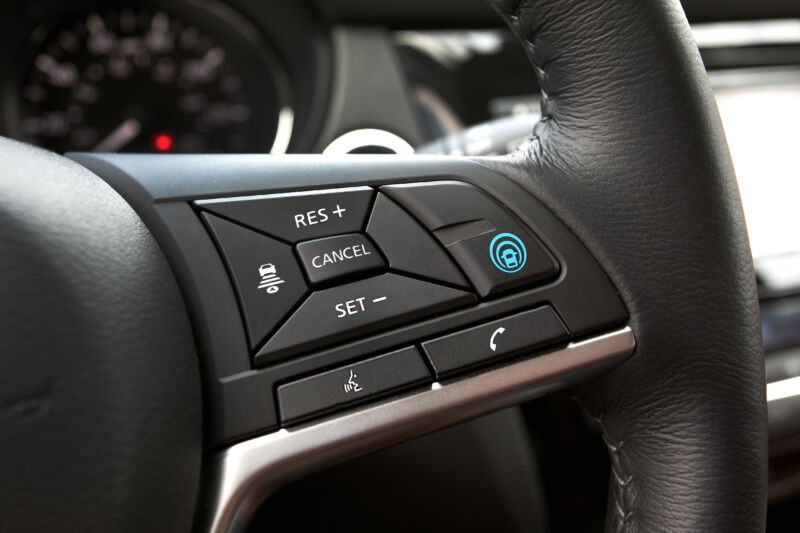
Nissan
Driver assists that help steer for you on the highway haven’t contributed much to road safety, according to a new study from the Insurance Institute for Highway Safety and the Highway Loss Data Institute. That’s in contrast to other features often bundled together as “advanced driver assistance systems,” or ADAS, many of which have shown a marked reduction in crash and claim rates.
“Everything we’re seeing tells us that partial automation is a convenience feature like power windows or heated seats rather than a safety technology,” said David Harkey, IIHS president.
However, we should note that, as a follow-up to a pair of earlier studies published in 2021, the new research by IIHS and HLDI focused on two older partially automated driving systems, model-year 2017–2019 Nissan Rogues with ProPilot Assist, and model year 2013–2017 BMWs with Driving Assistant Plus.
Those earlier studies found plenty of benefit to some ADAS features. Of BMW’s various collision avoidance systems, many reduced the claim frequency for various types of vehicle damage, property liability, and injury claims.
Crash rates
But when IIHS’s senior vice president of research, Jessica Cicchino, analyzed crash rate data for this population of cars, she found that despite an apparent modest reduction there was no significant difference in lane departure crashes between BMWs equipped with lane departure warning and prevention and cars fitted with both systems plus partial automation, versus cars without any steering assist, after controlling for variables like driver age, gender, model year, and so on.
However, BMWs with lane departure warning and prevention did have significantly fewer lane departure crashes during daylight hours than cars without such systems.
The ADAS in Nissan Rogues did significantly lower rear-end and lane departure crash rates, with the greatest benefit being in the cars with the most assists (partial automation as well as forward collision warning, automatic emergency braking, lane departure warning, lane departure prevention) versus Rogues without such systems.
But Cicchino found those effects persisted on surface streets and roads with speed limits lower than 35 mph (56 km/h), speeds at which ProPilot Assist won’t keep centered in a lane unless following another car. That suggests some other factor at work here—possibly the fact that the better-equipped Rogues also had more effective headlights, IIHS says. (This year, IIHS started requiring an automaker to fit all trim levels in a model with the best headlights in order to be eligible for a Top Safety Pick or Top Safety Pick+ rating.)
Not the first time lane keeping has claimed credit
This isn’t the first time that a different bit of equipment bundled together under a specific trim package or option has confounded attempts to determine the safety of lane-keeping systems. In 2018, the National Highway Traffic Safety Administration told Ars that Tesla misattributed the safety benefit of its Autopilot partially automated driving system when in fact the safety impact was likely due to automatic emergency braking and forward collision warning.
Testing for the safety of lane-keeping systems is more challenging than other crash-avoidance systems, because it must be actively engaged by the driver as opposed to constantly monitoring for danger, like an imminent forward crash. Not everyone with lane-keeping systems engages them, and even those who do don’t engage them on every journey.
Studies that look at actual telematics data from cars, which would accurately record when such systems are turned on, would help better answer this question, according to the study. And even then, the benefit is likely to be small—only 6 percent of police-reported crashes in the US “were run-off-road or same-direction sideswipes resulting from unintentional lane departures, or rear-ends, that occurred on interstate highways,” Cicchino wrote.
“With no clear evidence that partial automation is preventing crashes, users and regulators alike should not confuse it for a safety feature,” Cicchino said in a press release. “At a minimum, safeguards like those IIHS promotes through its rating program are essential to reduce the risks that drivers will zone out or engage in other distracting activities while partial automation is switched on.”












